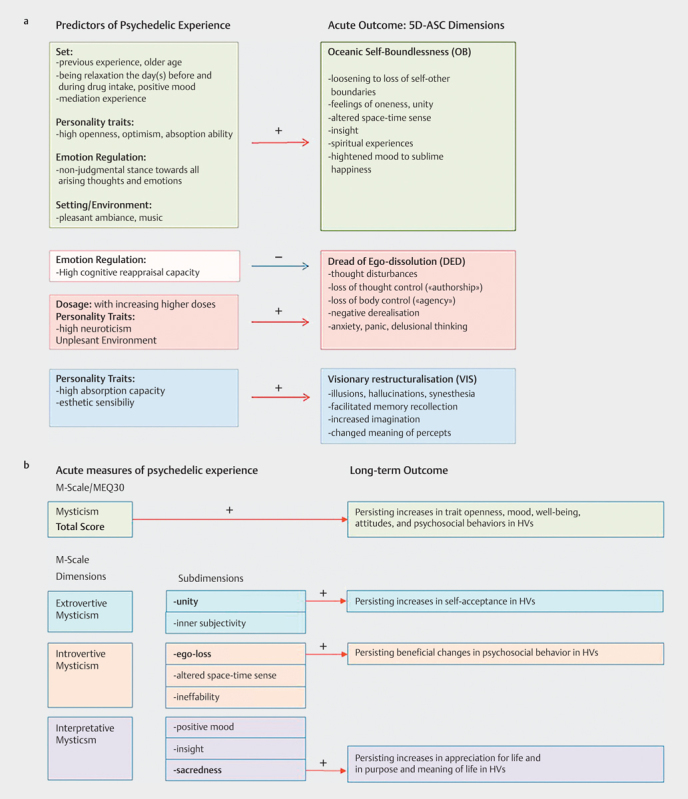Fig. 1.

Empirical described predictors of acute and long-term effects of Psychedelics. The Altered State of Consciousness Questionnaire (5D-ASC) 31 79 and the Mysticism Scale (M-Scale) 58 59 are usually administered shortly after the acute psychedelic experience. Red arrows=positive correlations; blue arrows=negative correlations: a : Scoring high on trait openness 47 48 , absorption 32 54 , and optimism about life 47 48 , being relaxed the day(s) before drug intake intake 32 47 48 , using a non-judgmental emotion regulation strategy 48 , pre-experience with ASCs 47 48 , older age 47 , and a pleasant ambiance 32 , supportive music 51 53 62 , and meditation practice 49 were predictive for a positive psychedelic experience (e. g., “Oceanic Boundlessness”) in healthy volunteers (HVs). High emotional re-appraisal capacity reduced the occurrence of distressing experiences (e. g., “Dread of ego-dissolution”) 48 . On the other hand, high neuroticism, young age, and an impersonal laboratory setting predicted unpleasant and anxious reactions to psilocybin in healthy volunteers 32 . In addition, high absorption capacity and esthetic sensibility predicted changes in visual perception and altered meaning of percepts (VIS) 32 47 . b : Mysticism Total Score (M-Scale or MEQ30) predicted persisting increases in trait openness 67 68 , mood, well-being, attitudes and psychosocial behaviors in healthy volunteers 48 67 69 . The M-Scale subdimensions “unity” and “sacredness” predicted persisting increases in self-acceptance and appreciation for life in healthy volunteers 48 , while “ego dissolution” predicted lasting increases in openness and mood 80 .
